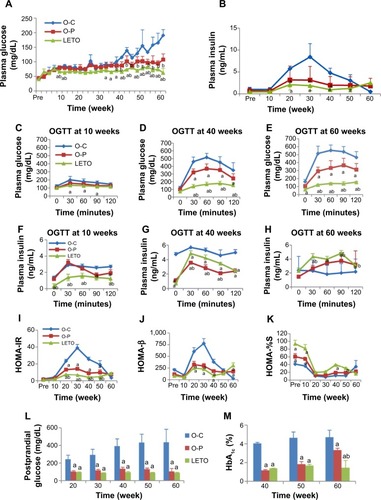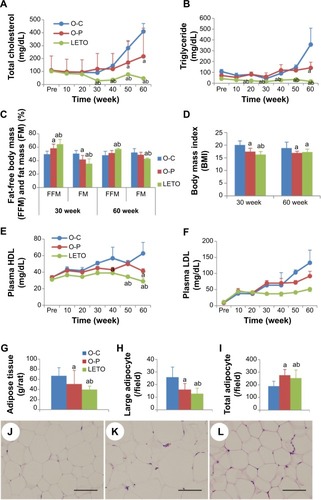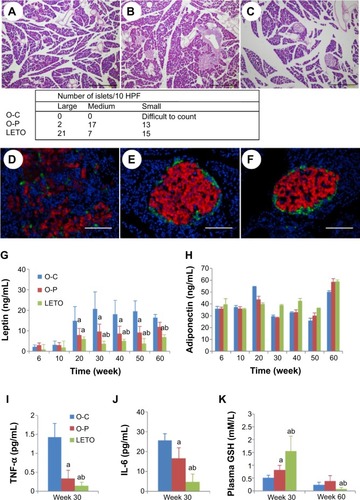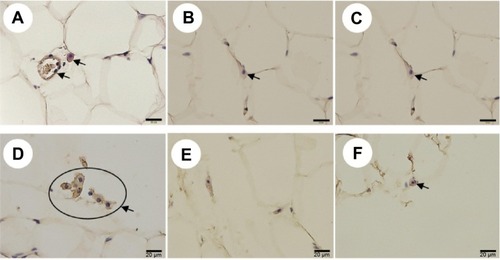Figures & data
Figure 1 Periodic changes in fasting blood glucose (A) and insulin (B) concentrations with long-term treatment with or without rare sugar d-psicose in rats till age 60 weeks.
Abbreviations: HbA1c, hemoglobin A1c; HOMA, homeostasis model assessment; LETO, Long-Evans Tokushima Otsuka; OGTT, oral glucose tolerance test; OLETF, Otsuka Long-Evans Tokushima Fatty; O-C, OLETF control; O-P, OLETF psicose.

Figure 2 Periodic changes in individual rat body weight of O-C (A) and O-P (B) groups with long-term treatment with or without rare sugar d-psicose in rats till age 60 weeks.
Abbreviations: LETO, Long-Evans Tokushima Otsuka; OLETF, Otsuka Long-Evans Tokushima Fatty; O-C, OLETF control; O-P, OLETF psicose.

Figure 3 Periodic changes of blood lipid profile in rats of all groups with long-term treatment with or without rare sugar d-psicose till age 60 weeks.
Abbreviations: BMI, body mass index; FM, fat mass; FFM, fat-free mass; HDL, high-density lipoprotein; LDL, low-density lipoprotein; LETO, Long-Evans Tokushima Otsuka; OLETF, Otsuka Long-Evans Tokushima Fatty; O-C, OLETF control; O-P, OLETF psicose; HE, hematoxylin and eosin.

Figure 4 Changes in light microscopic features of pancreas of rats of all groups at week 60 with long-term treatment with or without rare sugar d-psicose.
Abbreviations: GSH, glutathione; HPF, high power field; IL-6, interleukin 6; LETO, Long-Evans Tokushima Otsuka; OLETF, Otsuka Long-Evans Tokushima Fatty; O-C, OLETF control; O-P, OLETF psicose; TNF, tumor necrotic factor; HE, hematoxylin and eosin.

Figure 5 Immunohistochemical staining of CD68-expressing neutrophils (A–C) and F4/80-expressing macrophages (D–F) in adipose tissue of rats of all groups at week 60 with long-term treatment with or without rare sugar d-psicose.
Abbreviations: LETO, Long-Evans Tokushima Otsuka; OLETF, Otsuka Long-Evans Tokushima Fatty; O-C, OLETF control; O-P, OLETF psicose.

